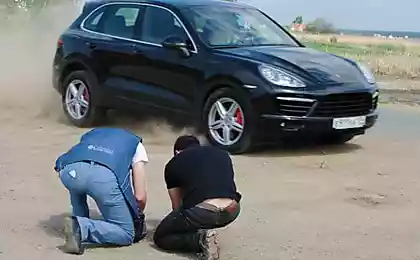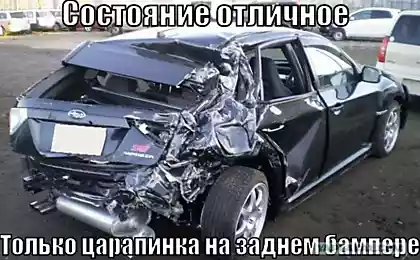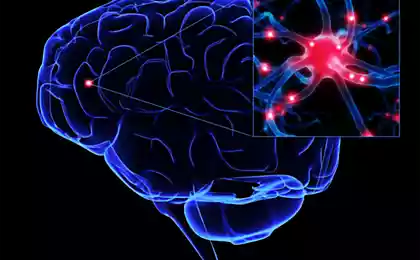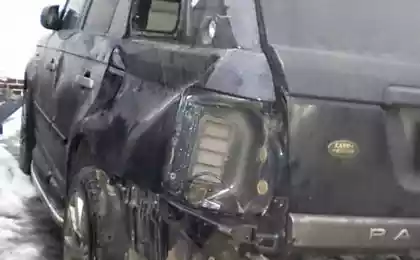729
Errors night driving
How many times have heard: "He rode quietly at night, along the familiar road and suddenly ...» ******. Ru figured out what dangers lie ahead of motorists at night and what mistakes, potentially leading to accidents, often allow drivers in the dark .
source.

Pόtemnu Aki pόsvetlu
One of the most common mistakes night driving in droves performed even late at night and at dusk - just before the sunrise or sunset. It seems that even (or already) is quite light and can go as day. Therein lies the danger.
In fact, in the pre-dawn / late afternoon hours of illumination is extremely low (this is well-known photographers and shoot at sunset and sunrise on a tripod). Furthermore, in this range the light efficiency decreases. Accordingly drops and visibility.
The procedure for right action in such a watch, in general, is simple: do not exceed the speed, increase the distance to the car in front and very carefully watch the road.

Let there be light!
It is clear that the "long-range" lights, the better they cover the entire width of the road, the better. However, you need to use them skillfully. Since the main beam headlights can dazzle oncoming drivers so that for a while he will not see anything other than solid white spots - here's a head-on collision. By the way, if this happened to you - you need to stop immediately and to include "emergency gang».
Conventional rules are the same. When approaching a counter-car switch from high beam to dipped. If that is not done the same, the maximum push to the right edge of the road and look to the same slide.
If you are blind distant light from behind and did not respond to a request to shut down the "blinking" stoplights, allow the driver to overtake you and if possible, do not look in the mirror at this point.
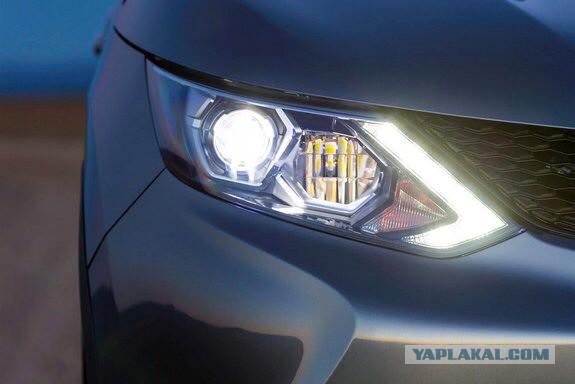
Approaching the car, you want to overtake, switch to high beam on the neighbor not to dazzle the driver. Coming to overtake and coming up with the overtaken vehicle - again on the far to the road ahead was well covered.
If you overtake - in turn switch to dipped beam on when a faster car will come to overtake and aligned with your.
Be careful on the rise. When approaching the top of it the danger of being blinded by oncoming cars increases dramatically!

I, as a hero, fighting sleep! ..
This is usually more telling in a driving school, but, in practice, many drivers forget about the danger of falling asleep behind the wheel immediately after receiving the rights.
Meanwhile, if the road at night in sleep overcomes so that sleepy eyelids to keep almost hands - no need to fight "to the last"! Neither heavy doses of coffee or energy drinks or various kinds of tingling or patting himself on the cheeks will not give the same effect as a short-term sleep. "Energetic", maybe, and you will never get to sleep, but also attention, much needed in the night road, do not concentrate.
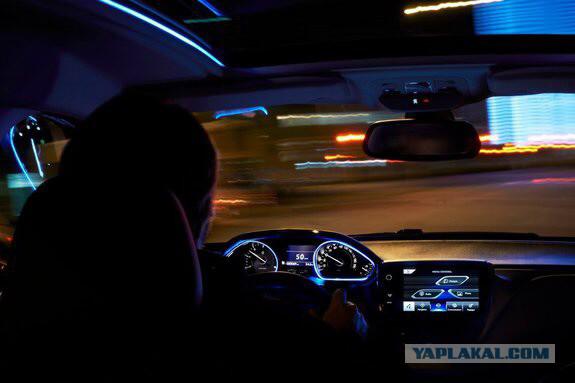
In general, if begins to "cut down" - stop and take a nap. Doctors say that even 15 minutes of sleep is enough to bring the body into the tone for the next 2-3 hours. This brings to mind an episode from the movie "Seventeen Moments of veins" when Shtirlits wildly tired before the last forced march to Berlin stops at 10 minutes to take a nap. And Kopelyan voice-overs ... That's a great tutorial for driving schools, cadets will be remembered for a lifetime. And after watching the tape fragment rather long ...
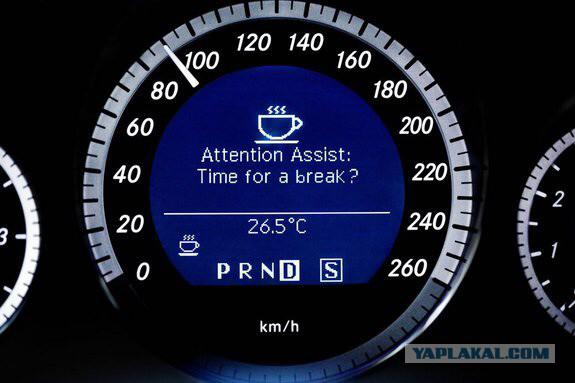
Keep your distance !!!
Features of human vision is such that at night we see an order of magnitude worse than in the daytime Less becomes the angle of view, the less accurate color perception is impaired peripheral vision. All this taken together leads to the fact that visually assess the situation becomes much more complicated, and the reaction rate decreases.
The advice is simple: twilight, night came - reduce speed, and most importantly - increase the distance. And remember that at night it difficult to properly assess.
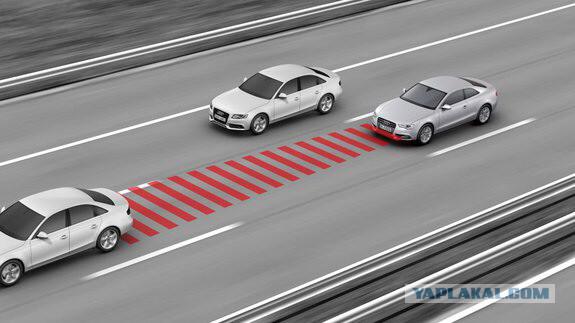
The same applies to the side of the interval. Night with an oncoming car need to disperse, with increased margin, than during the day, as their drivers can carry extending beyond the edges of the load and at night it can be virtually invisible.

What filth! ..
Dirty headlights during the day, is not likely to lead to an accident and did not create an emergency situation. In the worst case only attract the attention of Inspector DPS, and then only during the raid "Clean Car". But at night ... Dirt on caps headlights greatly reduces their light transmission, which means - and "range". Ideally, the lights should shine on 40-50 meters in beam mode and approximately 100 m - using far.
Ideal for cleaning headlights on the road became a special "wipers", but producers were forced to abandon this decision due to the introduction of very stringent safety standards for cars pedestrians. Modern as "headlight wipers", as practice shows, "eat" a huge amount "omyvayki" and it does not eliminate the need to manually wipe the headlights. And this should be done, if there was the slightest feeling that they became worse light.
Hint seems banal. But look how many cars, especially in bad weather goes with "tight toned" mud headlights. However, even nelenivy car owner usually "caring" only for front lighting technology. But you need to follow and the state of the rear lights: night hit "from behind" can be for riders not less tragic than the lateral or frontal collision.
All)))
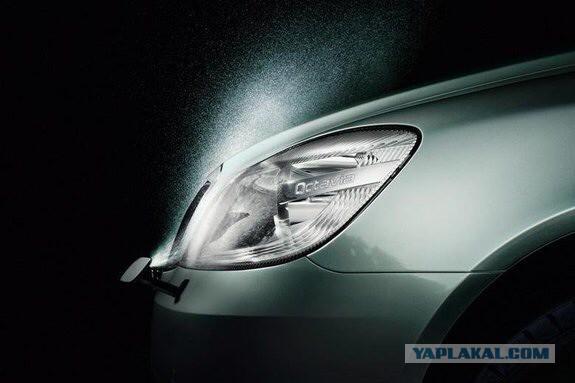
source.

Pόtemnu Aki pόsvetlu
One of the most common mistakes night driving in droves performed even late at night and at dusk - just before the sunrise or sunset. It seems that even (or already) is quite light and can go as day. Therein lies the danger.
In fact, in the pre-dawn / late afternoon hours of illumination is extremely low (this is well-known photographers and shoot at sunset and sunrise on a tripod). Furthermore, in this range the light efficiency decreases. Accordingly drops and visibility.
The procedure for right action in such a watch, in general, is simple: do not exceed the speed, increase the distance to the car in front and very carefully watch the road.

Let there be light!
It is clear that the "long-range" lights, the better they cover the entire width of the road, the better. However, you need to use them skillfully. Since the main beam headlights can dazzle oncoming drivers so that for a while he will not see anything other than solid white spots - here's a head-on collision. By the way, if this happened to you - you need to stop immediately and to include "emergency gang».
Conventional rules are the same. When approaching a counter-car switch from high beam to dipped. If that is not done the same, the maximum push to the right edge of the road and look to the same slide.
If you are blind distant light from behind and did not respond to a request to shut down the "blinking" stoplights, allow the driver to overtake you and if possible, do not look in the mirror at this point.

Approaching the car, you want to overtake, switch to high beam on the neighbor not to dazzle the driver. Coming to overtake and coming up with the overtaken vehicle - again on the far to the road ahead was well covered.
If you overtake - in turn switch to dipped beam on when a faster car will come to overtake and aligned with your.
Be careful on the rise. When approaching the top of it the danger of being blinded by oncoming cars increases dramatically!

I, as a hero, fighting sleep! ..
This is usually more telling in a driving school, but, in practice, many drivers forget about the danger of falling asleep behind the wheel immediately after receiving the rights.
Meanwhile, if the road at night in sleep overcomes so that sleepy eyelids to keep almost hands - no need to fight "to the last"! Neither heavy doses of coffee or energy drinks or various kinds of tingling or patting himself on the cheeks will not give the same effect as a short-term sleep. "Energetic", maybe, and you will never get to sleep, but also attention, much needed in the night road, do not concentrate.

In general, if begins to "cut down" - stop and take a nap. Doctors say that even 15 minutes of sleep is enough to bring the body into the tone for the next 2-3 hours. This brings to mind an episode from the movie "Seventeen Moments of veins" when Shtirlits wildly tired before the last forced march to Berlin stops at 10 minutes to take a nap. And Kopelyan voice-overs ... That's a great tutorial for driving schools, cadets will be remembered for a lifetime. And after watching the tape fragment rather long ...

Keep your distance !!!
Features of human vision is such that at night we see an order of magnitude worse than in the daytime Less becomes the angle of view, the less accurate color perception is impaired peripheral vision. All this taken together leads to the fact that visually assess the situation becomes much more complicated, and the reaction rate decreases.
The advice is simple: twilight, night came - reduce speed, and most importantly - increase the distance. And remember that at night it difficult to properly assess.

The same applies to the side of the interval. Night with an oncoming car need to disperse, with increased margin, than during the day, as their drivers can carry extending beyond the edges of the load and at night it can be virtually invisible.

What filth! ..
Dirty headlights during the day, is not likely to lead to an accident and did not create an emergency situation. In the worst case only attract the attention of Inspector DPS, and then only during the raid "Clean Car". But at night ... Dirt on caps headlights greatly reduces their light transmission, which means - and "range". Ideally, the lights should shine on 40-50 meters in beam mode and approximately 100 m - using far.
Ideal for cleaning headlights on the road became a special "wipers", but producers were forced to abandon this decision due to the introduction of very stringent safety standards for cars pedestrians. Modern as "headlight wipers", as practice shows, "eat" a huge amount "omyvayki" and it does not eliminate the need to manually wipe the headlights. And this should be done, if there was the slightest feeling that they became worse light.
Hint seems banal. But look how many cars, especially in bad weather goes with "tight toned" mud headlights. However, even nelenivy car owner usually "caring" only for front lighting technology. But you need to follow and the state of the rear lights: night hit "from behind" can be for riders not less tragic than the lateral or frontal collision.
All)))


